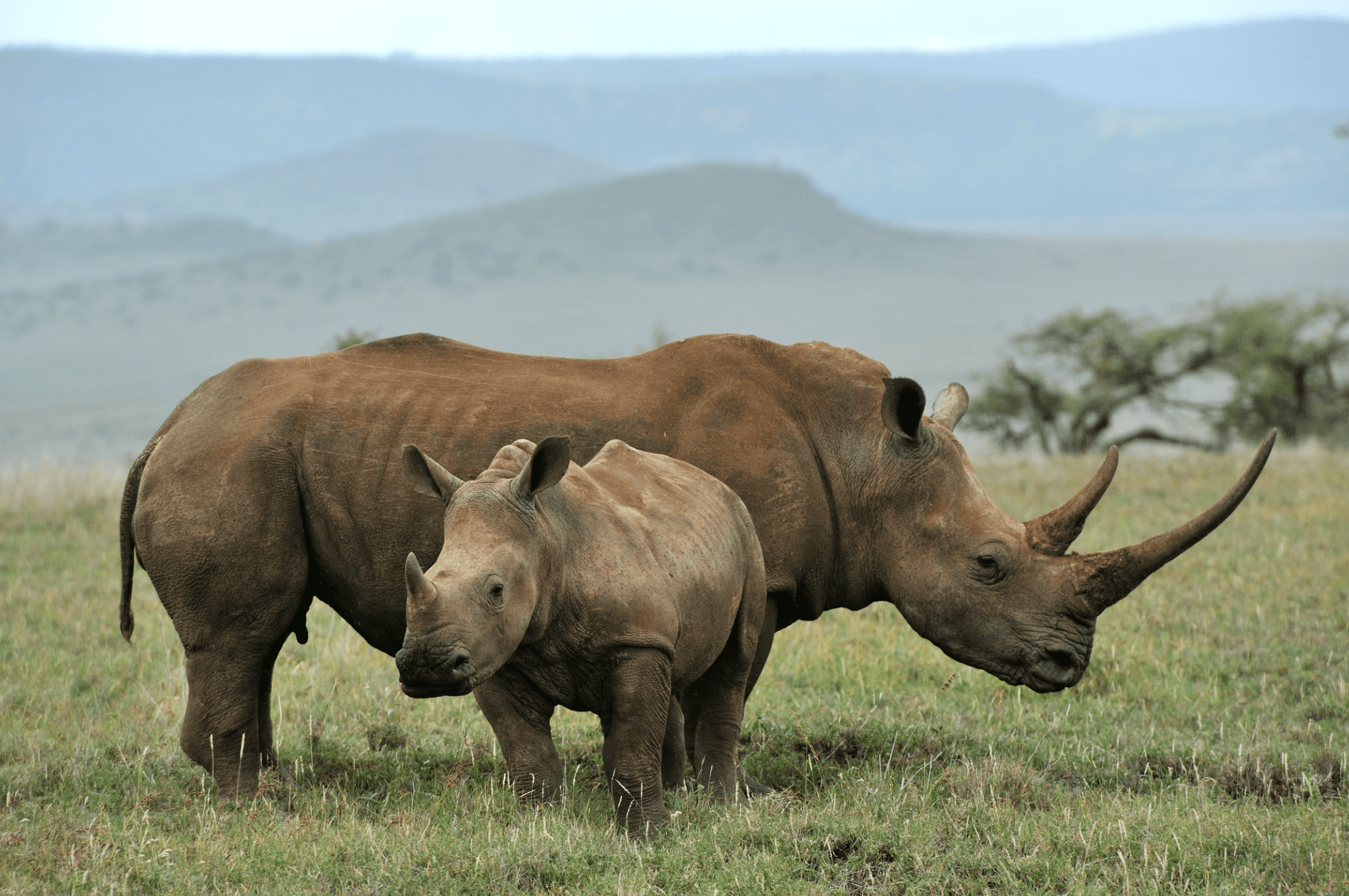Kenya is home to some of the most remarkable wildlife on the planet, and its rhinos stand as a symbol of resilience and conservation. These majestic creatures, including the critically endangered black rhino and the thriving white rhino, play a crucial role in maintaining the delicate balance of Kenya’s ecosystems. Yet, rhinos face ongoing threats from poaching and habitat loss, making conservation efforts more critical than ever. In this article, you’ll discover the vital work being done to protect these animals, explore their natural habitats, and learn where you can experience the awe of seeing rhinos up close in Kenya’s wilderness.
The Rhinos of Kenya: An Overview
Kenya is home to two species of rhinos: the critically endangered black rhino and the near-threatened white rhino. These iconic creatures are not only vital to the country’s biodiversity but also hold deep cultural and ecological significance.
Types of Rhinos in Kenya
1. Black Rhino (Diceros bicornis)
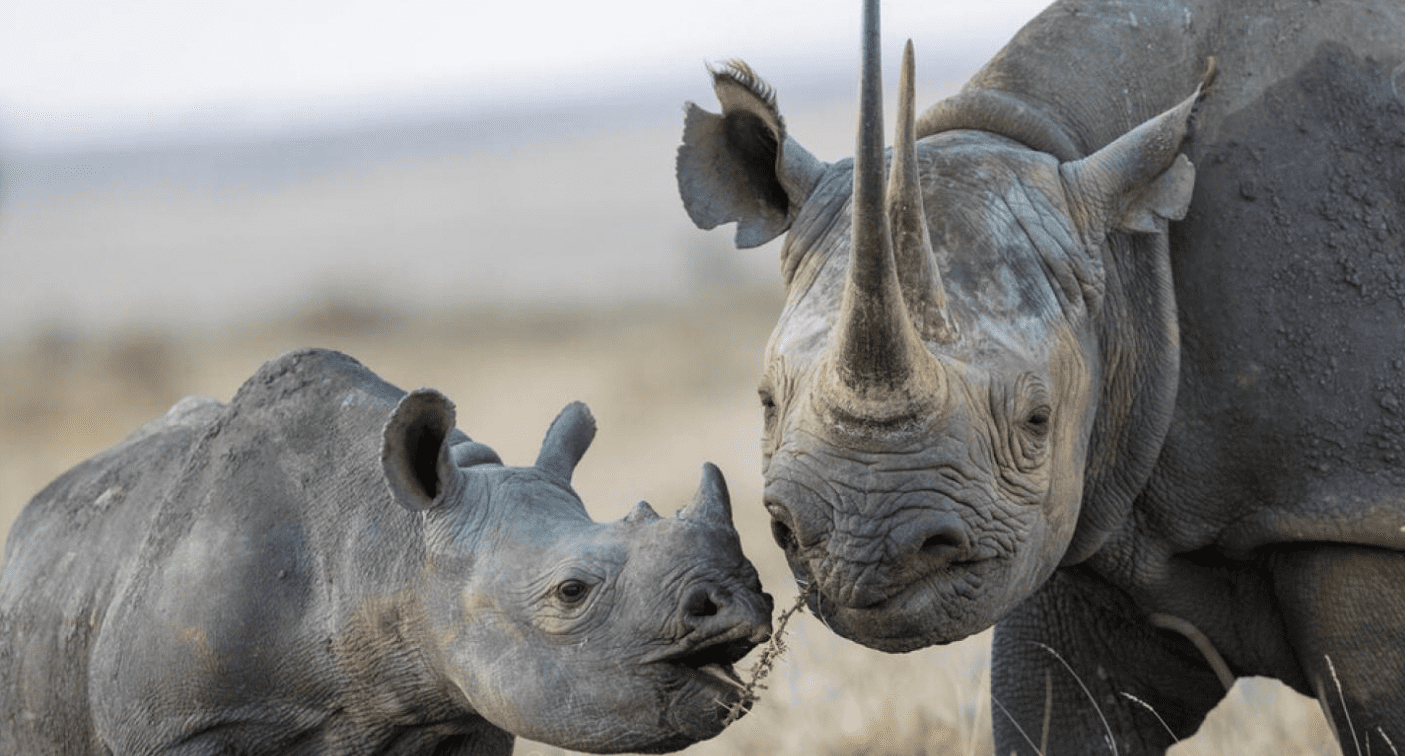
The black rhino, known for its smaller size and hooked upper lip, is a browser that feeds on bushes and shrubs. Once on the brink of extinction due to rampant poaching, Kenya now boasts one of the largest populations of black rhinos in Africa, thanks to extensive conservation efforts. Despite these gains, black rhinos remain critically endangered, with fewer than 1,000 individuals in the country.
2. White Rhino (Ceratotherium simum)
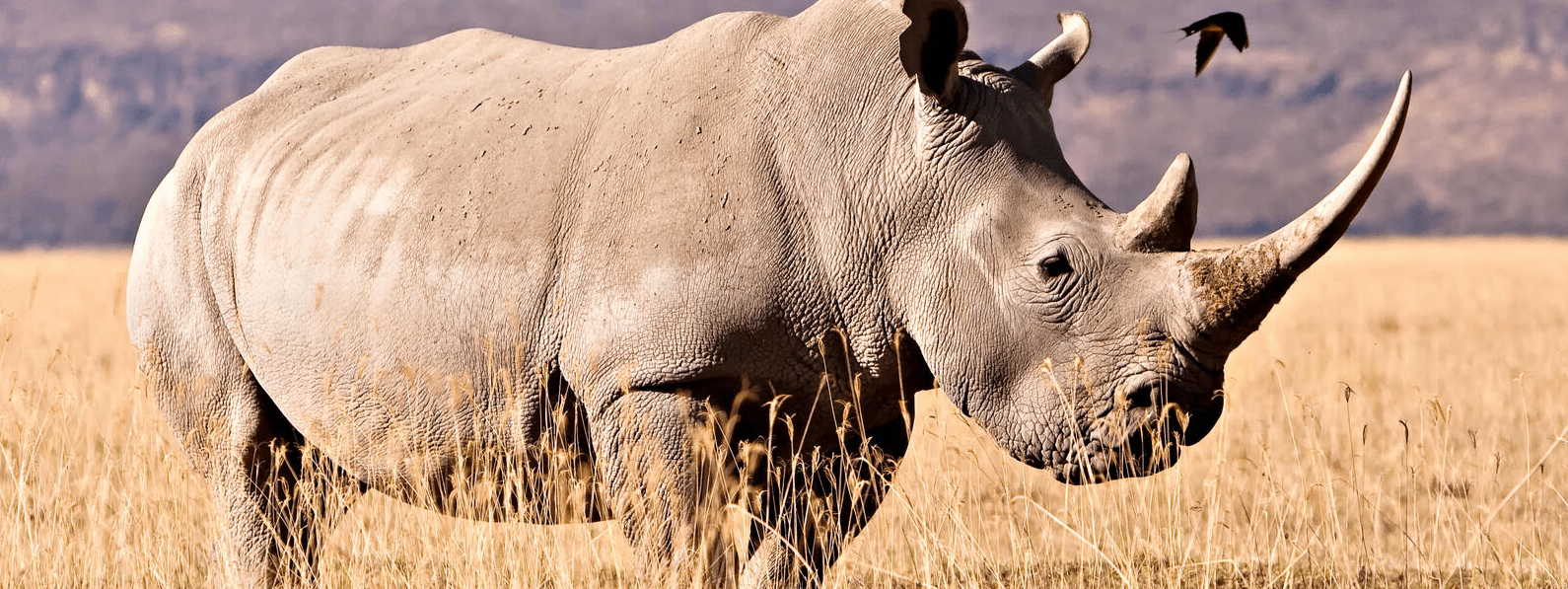
White rhinos are larger and have a broad, square-shaped mouth designed for grazing on grass. Kenya is home to both southern white rhinos and the last two remaining northern white rhinos, protected under armed guard at Ol Pejeta Conservancy. The southern white rhino population is stable, but the subspecies faces challenges from poaching and habitat fragmentation.
Population Trends and Challenges
Rhino populations in Kenya have fluctuated dramatically over the years. Black rhinos experienced a devastating decline in the 1970s and 1980s due to poaching, dropping to just a few hundred individuals. Thanks to rigorous anti-poaching measures and habitat restoration, their numbers are slowly recovering. Similarly, white rhinos have been reintroduced to protected areas, but they remain vulnerable to illegal wildlife trade and encroachment on their habitats.
The Role of Rhinos in Kenya’s Ecosystem and Culture
Rhinos play a critical role in maintaining the health of Kenya’s ecosystems. By grazing and browsing, they shape vegetation and create habitats for smaller species, promoting biodiversity. Culturally, rhinos are revered symbols of strength and endurance, often featured in Kenyan art and folklore. Protecting rhinos not only preserves these cultural ties but also enhances Kenya’s reputation as a global leader in wildlife conservation.
These magnificent creatures remind us of the delicate balance between humans and nature, underscoring the importance of ongoing conservation efforts.
Rhino Conservation Efforts in Kenya
Kenya has become a global leader in rhino conservation, transforming its approach after near-catastrophic losses in the 20th century. Today, the nation is a beacon of hope for rhino recovery, thanks to innovative programs and tireless efforts by conservationists.
Historical Context: Decline and Recovery
Rhinos in Kenya faced a severe crisis during the late 20th century, with poaching nearly wiping out populations.
- Poaching Crisis in the 20th Century
The global demand for rhino horns fueled rampant poaching in the 1970s and 1980s. Kenya’s rhino population plummeted from thousands to just a few hundred individuals, creating an ecological and conservation emergency. - Near Extinction and Recovery Efforts
Recognizing the urgency, Kenya launched intensive anti-poaching campaigns and established protected areas to safeguard the remaining rhinos. These actions laid the foundation for the species’ slow but steady recovery.
Key Conservation Initiatives
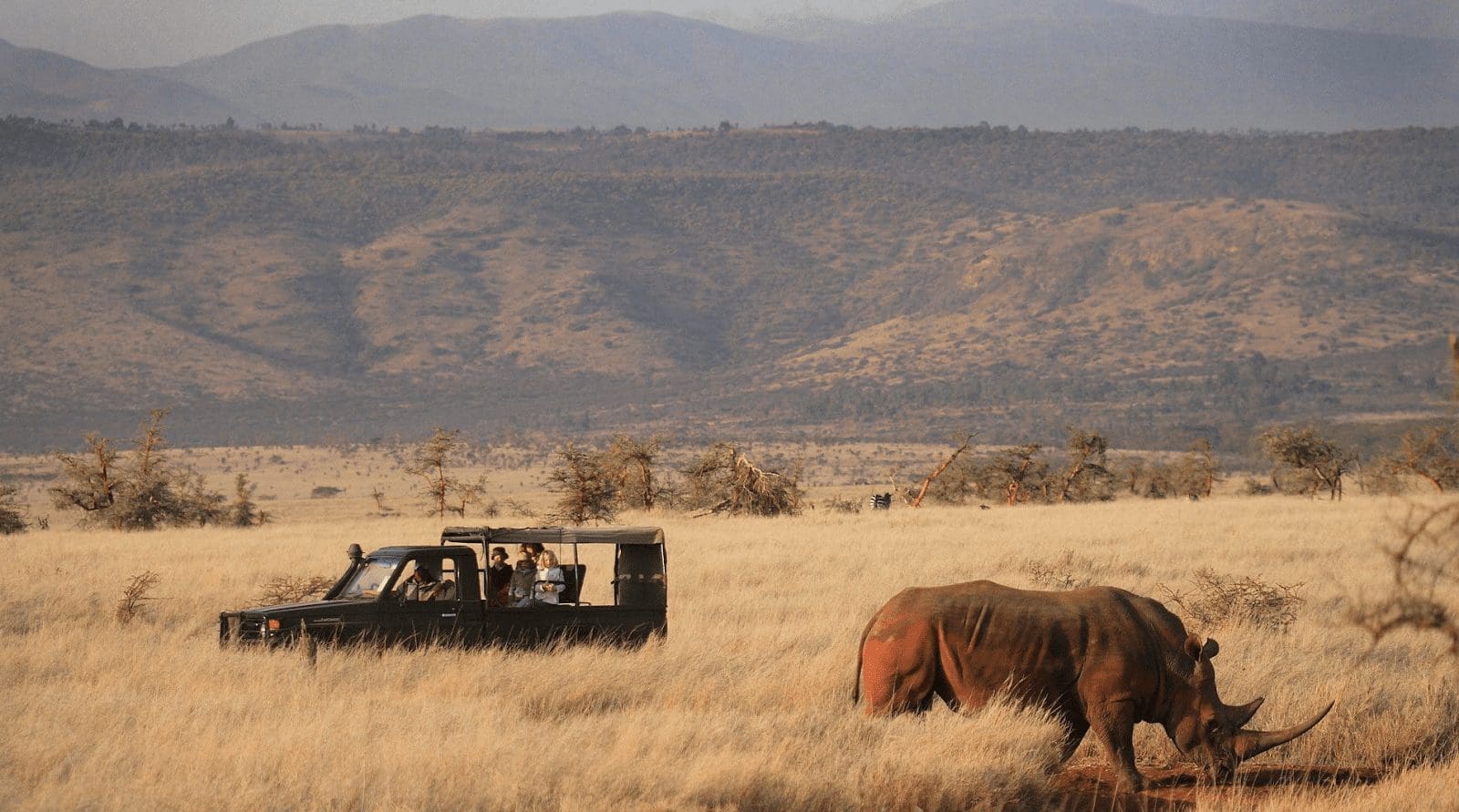
Efforts to protect rhinos in Kenya revolve around targeted strategies that address poaching, habitat preservation, and community engagement.
- Anti-Poaching Measures
Kenya employs highly trained rangers, advanced surveillance technologies, and collaborations with law enforcement to combat poaching. The use of drones and canine units has significantly enhanced patrol efficiency. - Community-Based Conservation Programs
Local communities are actively involved in conservation through education, profit-sharing from tourism, and sustainable development projects. These initiatives help align community interests with rhino protection. - Role of Private Conservancies
Private conservancies like Ol Pejeta and Lewa Wildlife Conservancy play a pivotal role in offering secure habitats, employing armed patrols, and conducting research on rhino behavior and health.
Organizations Leading the Charge
Several organizations are at the forefront of rhino conservation in Kenya, driving impactful programs and safeguarding habitats.
- Kenya Wildlife Service (KWS)
The government body responsible for wildlife protection oversees national parks, conducts anti-poaching operations, and supports rhino population monitoring. - Ol Pejeta Conservancy
Home to the largest population of black rhinos in East Africa and the last two northern white rhinos, Ol Pejeta is a global leader in rhino conservation and research. - Lewa Wildlife Conservancy
A UNESCO World Heritage Site, Lewa has been instrumental in increasing black rhino numbers and reintroducing rhinos to areas where they were previously extinct.
Success Stories and Current Challenges
Kenya’s conservation efforts have achieved remarkable successes but are not without ongoing challenges.
- Population Growth in Protected Areas
Rhino populations in conservancies and national parks have steadily grown, with black rhinos now numbering close to 1,000. These successes are a testament to Kenya’s strategic conservation model. - Ongoing Threats from Poaching and Habitat Loss
Despite progress, rhinos remain under threat from sophisticated poaching syndicates and increasing habitat encroachment due to human activities. Sustained vigilance and funding are essential to ensure their survival.
Kenya’s journey from crisis to recovery underscores the power of collaboration and innovation in wildlife conservation. Protecting rhinos not only safeguards these iconic animals but also strengthens Kenya’s biodiversity and heritage for future generations.
Habitat of Rhinos in Kenya
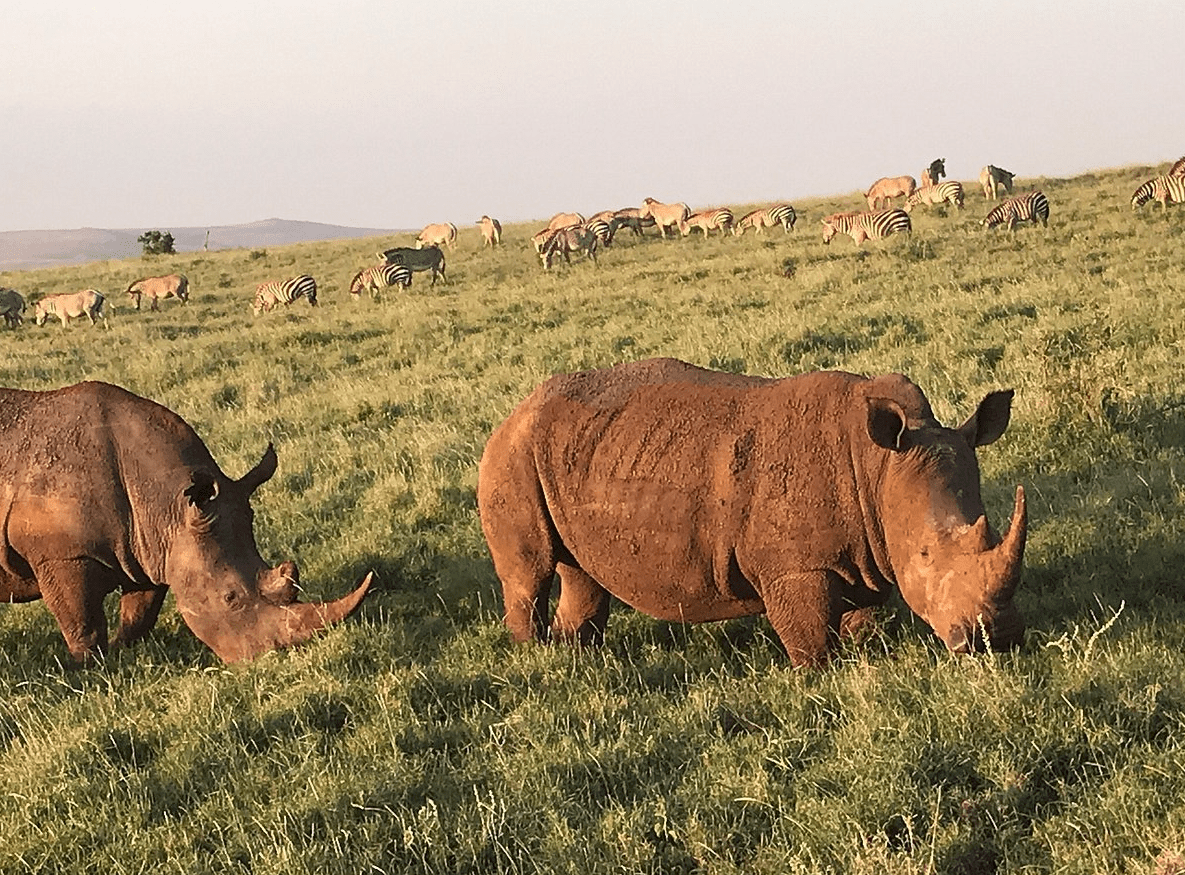
The natural habitats of rhinos are essential for their survival, offering the space and resources they need to thrive. In Kenya, these habitats range from vast savannahs to protected sanctuaries, each playing a critical role in rhino conservation.
Natural Habitats
Rhinos in Kenya have specific habitat preferences that cater to their dietary and behavioral needs.
- Preferred Ecosystems: Savannahs, Grasslands, and Shrublands
Black rhinos favor dense shrublands for browsing, while white rhinos thrive in open savannahs and grasslands, where grazing is abundant. These ecosystems provide the vegetation, water sources, and space rhinos need to roam freely. - Regions Where Rhinos Thrive
Key regions for rhinos include areas like the Laikipia Plateau, the Great Rift Valley, and parts of southern Kenya. These regions offer a combination of favorable climates and abundant vegetation, making them ideal for rhino populations.
Protected Areas for Rhinos
Kenya has established several protected areas to safeguard rhino populations from threats like poaching and habitat destruction.
- National Parks
Parks like Nairobi National Park and Lake Nakuru National Park provide secure environments for rhinos, with strict protection measures in place. These areas are critical for the survival of wild rhino populations. - Conservancies and Sanctuaries
Private conservancies, such as Ol Pejeta and Lewa Wildlife Conservancy, serve as safe havens for rhinos. These sanctuaries focus on intensive protection, breeding programs, and habitat management to ensure rhinos can thrive without external threats.
Importance of Habitat Preservation
Preserving and restoring rhino habitats is essential for their long-term survival and the health of Kenya’s ecosystems.
- Challenges of Urbanization and Agriculture
Urban expansion, deforestation, and agricultural activities pose significant threats to rhino habitats. As human settlements grow, natural habitats are fragmented, reducing the space available for rhinos to graze, browse, and breed. - Efforts to Maintain and Restore Habitats
Kenya has implemented habitat restoration projects, including reforestation, controlled burns to rejuvenate grasslands, and land-use planning to minimize human-wildlife conflict. Conservancies also work closely with local communities to promote sustainable practices that benefit both humans and wildlife.
Kenya’s diverse habitats are vital to the survival of rhinos, providing them with the environment they need to thrive. Protecting these spaces ensures that future generations can continue to experience the majesty of rhinos in their natural homes.
Where to See Rhinos in Kenya
Kenya offers unparalleled opportunities to witness rhinos in their natural habitats. From expansive conservancies to accessible national parks, these destinations showcase the country’s commitment to rhino conservation and provide visitors with unforgettable wildlife experiences.
Top Locations for Rhino Sightings
Kenya is home to some of the best spots for rhino viewing, where conservation efforts have helped populations thrive.
- Ol Pejeta Conservancy
Known as the largest black rhino sanctuary in East Africa, Ol Pejeta is a must-visit for rhino enthusiasts. This conservancy is also home to the last two northern white rhinos on the planet, making it a unique destination for conservation-focused tourism. - Lewa Wildlife Conservancy
A UNESCO World Heritage Site, Lewa combines breathtaking landscapes with a thriving rhino population. It offers visitors a chance to see both black and white rhinos while supporting local community initiatives and conservation projects. - Nairobi National Park
Located just outside Kenya’s capital, Nairobi National Park is famous for its juxtaposition of wildlife against a city skyline. It is one of the easiest places to spot rhinos, particularly black rhinos, in a natural yet accessible setting. - Lake Nakuru National Park
This park is renowned for its picturesque lake and flamingo populations, but it’s also a stronghold for both black and white rhinos. The park’s dense woodlands and open savannahs make it a prime location for rhino spotting.
Best Practices for Rhino Viewing
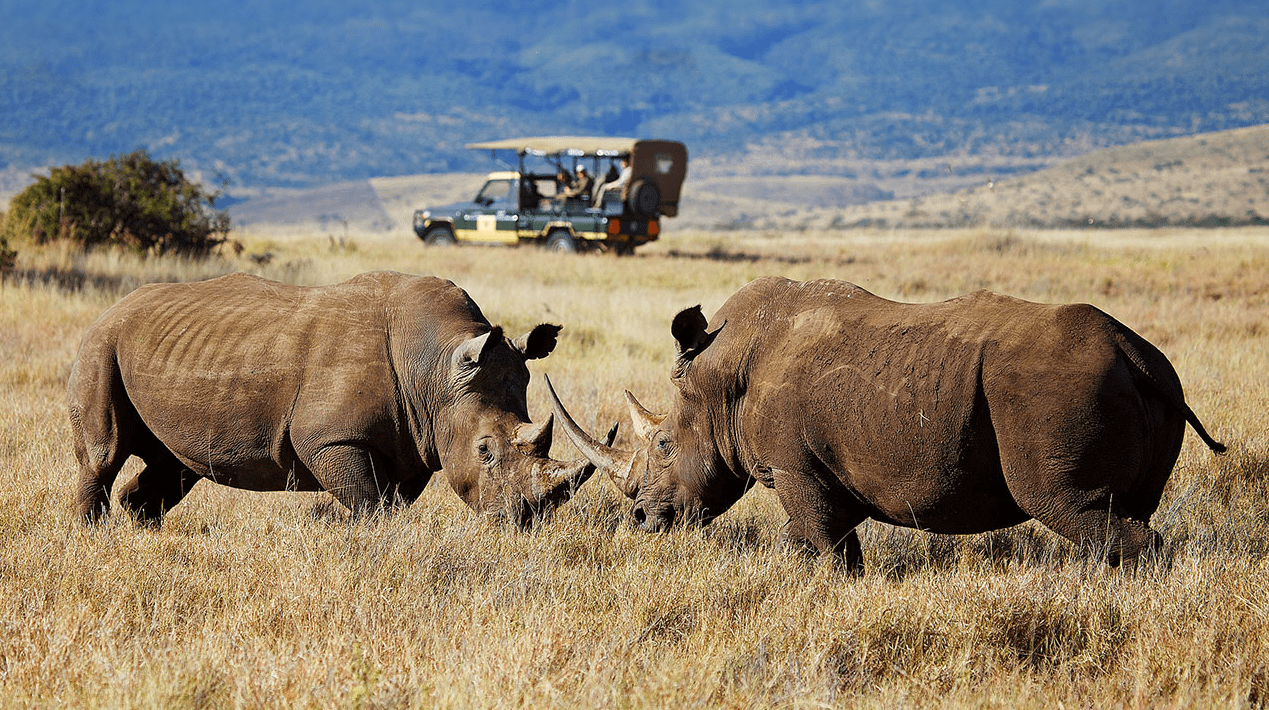
When visiting rhino habitats, it’s important to engage in responsible tourism to ensure these majestic animals remain undisturbed.
- Guided Safaris and Responsible Tourism
Always opt for guided safaris led by certified experts who understand the local wildlife and ecosystem. These guides prioritize the safety of both visitors and rhinos while enhancing your experience with in-depth knowledge. - Ethical Considerations and Rules for Wildlife Encounters
Maintain a respectful distance from rhinos, follow park rules, and avoid making loud noises or sudden movements that could stress the animals. Supporting eco-friendly lodges and tours also contributes to sustainable tourism.
Seasonal Tips for Visiting
Timing your visit can enhance your chances of seeing rhinos and enjoying Kenya’s incredible landscapes.
- Best Times of the Year for Rhino Spotting
The dry seasons, from June to October and January to February, are ideal for rhino viewing. During these months, vegetation is sparse, and water sources attract wildlife, making it easier to spot rhinos. - Tour Packages and Activities Available
Many conservancies and parks offer tailored tour packages, including game drives, walking safaris, and even opportunities to learn about conservation efforts firsthand. Booking in advance ensures you secure a spot during peak seasons.
Kenya’s rhino viewing destinations combine the thrill of wildlife encounters with the satisfaction of supporting vital conservation efforts. By choosing ethical tours and visiting these iconic locations, you contribute to preserving rhinos for generations to come.
The Role of Tourism in Rhino Conservation
Tourism plays a critical role in the ongoing conservation of rhinos in Kenya, providing much-needed funding and fostering community engagement. Visitors have the power to support both wildlife protection and sustainable development through their travel choices.
How Tourism Supports Conservation Funding
Tourism directly funds conservation initiatives in Kenya through park entry fees, conservancy charges, and eco-tourism activities. These contributions help maintain protected areas, support anti-poaching patrols, and finance habitat restoration efforts. Organizations like Ol Pejeta Conservancy and Lewa Wildlife Conservancy rely on tourism revenue to sustain their operations and ensure the survival of rhino populations.
Benefits for Local Communities
Tourism not only benefits wildlife but also creates opportunities for local communities. Jobs in lodges, guiding, and conservation programs provide income while encouraging community support for wildlife protection. Additionally, a portion of tourism revenue often funds schools, healthcare facilities, and infrastructure projects, improving the quality of life for people living near conservation areas.
Encouraging Responsible and Sustainable Tourism Practices
Sustainable tourism is key to ensuring long-term benefits for both rhinos and communities. Tourists can contribute by choosing eco-certified lodges, participating in ethical safaris, and avoiding activities that exploit wildlife. By supporting responsible operators, visitors help set a standard for tourism that prioritizes conservation and community well-being.
How You Can Help Rhino Conservation in Kenya
Protecting rhinos requires a collective effort, and individuals around the world can make a significant impact. Whether through financial support, hands-on involvement, or advocacy, there are many ways to contribute.
Donations to Conservation Organizations
Supporting organizations such as the Kenya Wildlife Service (KWS), Ol Pejeta Conservancy, and Lewa Wildlife Conservancy is one of the most effective ways to help. Donations directly fund anti-poaching efforts, habitat preservation, and community outreach programs. Many organizations offer transparent donation channels, ensuring your contribution is used for impactful conservation work.
Volunteering Opportunities
For those looking for hands-on involvement, volunteering with conservation organizations in Kenya can be a life-changing experience. Programs often include assisting with habitat restoration, tracking wildlife, and educating local communities about the importance of conservation. These opportunities provide invaluable support to on-the-ground efforts while offering participants a deeper connection to wildlife.
Spreading Awareness About Rhino Conservation
Advocacy and education are powerful tools in the fight to save rhinos. Sharing information about Kenya’s conservation success stories and challenges on social media, blogs, or community platforms helps raise global awareness. The more people understand the importance of rhino conservation, the stronger the collective effort to protect these iconic animals.
By supporting tourism, donating, volunteering, and spreading awareness, you can play an active role in safeguarding Kenya’s rhinos. Together, these actions ensure that rhinos continue to thrive in their natural habitats for generations to come.
Safeguarding Kenya’s Rhinos: A Shared Responsibility
Kenya’s rhino conservation efforts showcase remarkable progress, from population recoveries to innovative protection measures. Yet, challenges like poaching and habitat loss remain. Visiting Kenya not only offers the chance to witness these majestic animals but also directly supports their preservation through responsible tourism. Your contributions—whether through donations, volunteering, or raising awareness—play a vital role in ensuring rhinos thrive for future generations. Join the global effort to protect Kenya’s rhinos and help secure their place in our world’s rich biodiversity. Together, we can make a lasting impact.

